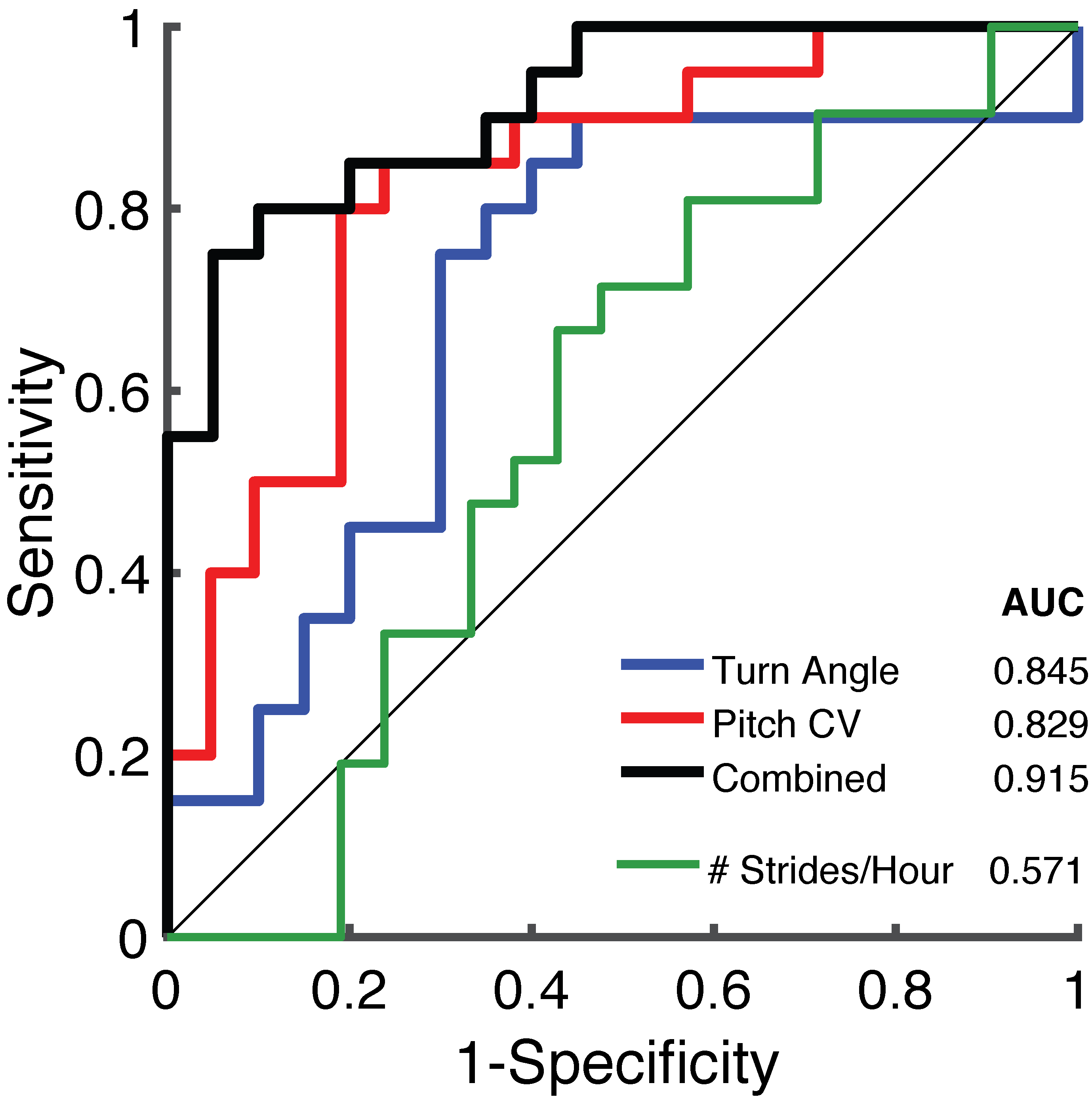Session Information
Date: Saturday, October 6, 2018
Session Title: Parkinson’s Disease: Clinical Trials, Pharmacology And Treatment
Session Time: 1:45pm-3:15pm
Location: Hall 3FG
Objective: We aim to determine the set of gait and turning measures from wearable technology that best separate mobility during daily life in people with Parkinson’s disease (PD) compared to elderly control subjects.
Background: Quantitative assessment of mobility is important for management of PD but the specific characteristics that best separate parkinsonian from elderly gait during natural, daily activities is not known. Mobility in daily life involves not only straight-ahead gait, but also hundreds of turns a day that are affected by PD. We hypothesize that monitoring of mobility during daily life will provide turning and gait measures and variability of measures that will be useful in separating PD from age-matched control mobility.
Methods: Twenty subjects with PD and 20 healthy, age-matched, control subjects were tested. Subjects wore 3 inertial sensors (Opals by APDM), one on each foot and one on the waist for 5 days (~10h per day) of continuous monitoring of accelerations and angular velocities at 128 Hz. Gait was defined as walking bouts of at least 3 consecutive steps, a minimum duration of 3 seconds and intermittent breaks of no longer than 6 seconds. Besides a measure of the quantity of gait (# strides/hour), quality of gait was measured as gait speed, stride length, gait cycle duration, and pitch at initial contact. Measures of turning mobility included turn angle, turn peak velocity and turn duration. Mean and coefficient of variation (CV) were calculated for each measure. Receiver operator curves based on logistic regression were calculated to separate PD from control mobility.
Results: Among the measures of mobility, average turn angle (AUC = 0.845) and variability of pitch of the foot at initial contact (AUC = 0.829) were the most sensitive single measures in discriminating people with PD from control subjects (Figure). Both measures appeared to be independent; combined, they provided the strongest PD prediction model (AUC = 0.915). Quantity of gait (number of strides/hour) was only a weak classifier (AUC = 0.571) with no difference between PD and control subjects.
Conclusions: Avoidance of sharp turns (measured by turn angle) and shuffling of gait (measured by variability of foot pitch) were the most sensitive and specific, independent classifiers of parkinsonian daily mobility. Thus, quality, but not quantity, of turning and gait differ in PD from control subjects, suggesting that movement monitors but not activity monitors best detect mobility disability associated with PD.
To cite this abstract in AMA style:
F. Horak, J. McNames, M. El Gohary, J. Nutt, C. Curtze. Classifying Parkinsonian Gait and Turning in Daily Life with Wearable Technology [abstract]. Mov Disord. 2018; 33 (suppl 2). https://www.mdsabstracts.org/abstract/classifying-parkinsonian-gait-and-turning-in-daily-life-with-wearable-technology/. Accessed December 29, 2025.« Back to 2018 International Congress
MDS Abstracts - https://www.mdsabstracts.org/abstract/classifying-parkinsonian-gait-and-turning-in-daily-life-with-wearable-technology/

